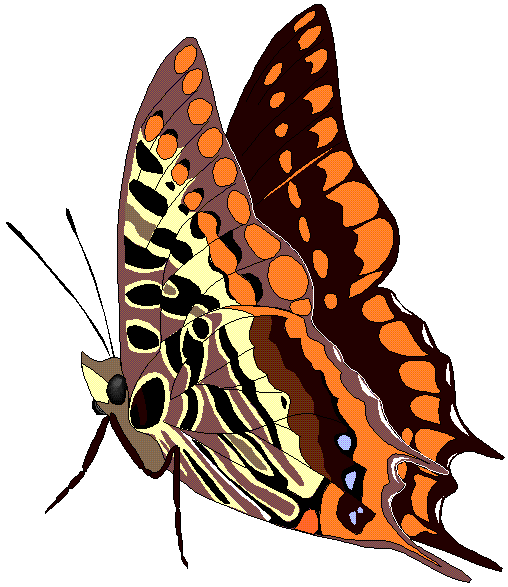|
Pests become active again outdoors as soon as the weather warms. As these pests go around searching for food, water, shelter, mates and places to lay eggs, many WILL find their way inside your home. They don't care that people feel very strongly that "my home is my castle" and they are NOT invited! Fortunately, we can keep pests outdoors, where they belong, with a professionally applied perimeter treatment. These treatments are applied around the outside of your home, and are especially effective at stopping crawling pests from coming indoors. This can include earwigs, crickets, centipedes, sowbugs, ants, and a host of other nasty invaders. Besides being a nuisance, these pests can cause various problems indoors. For example, crickets feed on and damage fabrics like drapes, carpeting, and clothes, and their chirping can drive you crazy. Invading pests can also leave odors and stains, contaminate your food as well as your pet's food, leave webs, dead insect bodies and droppings, and can bite or sting. In fact, each year about a half million people are stung by bees, wasps, ants, spiders, and scorpions. Plants very close to your home create even more hiding and breeding places for pests, and increase the chance for pest invasions. A perimeter treatment is just one of the tools we use that enables you to enjoy the benefits of a comfortable, pest-free life. As has been proven time and again, often the best offense is a good defense! Call Stanley Pest Control today! |
|
Let's Be Thankful for Modern Pest Comfort! Incredibly, the fact that insects carry and transmit many diseases was discovered only about 100 years ago. It wasn't until 1892 that mosquitoes were finally shown to be the culprit that transmits malaria. Then in 1896 it was discovered that bubonic plague is spread by fleas when they feed on infected rats and then on humans. The mystery of how to prevent the plague, a killer of millions, was finally solved! Prior to these two discoveries, cleanliness and sanitation were often not considered very important. For instance, the first time the city of Paris cleaned their streets was in 1666. The event was so unusual that two commemorative coins were issued And Queen Elizabeth I (1533-1603) was very progressive for her time when she bathed at least once a month to set an example of cleanliness. During the Middle Ages, the methods used to control pests were crude and ineffective by today's standards. Rats, bed bugs, and clothes moths were the main pests people tried to control. "Shakers and beaters" were employed to thoroughly beat woolen rugs and firs in an attempt to control fabric pests. And professional "rat catchers" were hired by the upper class. Professional pest control today is changing at a faster pace than ever before. As training intensifies and new, safer and more effective materials and application techniques have become available to us, we are, more than ever, taking our role as "protectors of health and property." |
Pest Trivia!
Challenge
Your Friends with These!
|
1. What pests eat bed bugs? 2. Can you kill a cockroach by cutting off his head? 3. How many mousetrap patents has the U.S. Patent and Trademark Office registered? 4. Can a flea accelerate faster than the space shuttle? 5. One pair of mice an produce how many offspring in just four months? |
Answers to Pest Trivia!
|
1. Cockroaches. If you've ever wondered if roaches are good for anything, now you know! 2. You can, but it's a slow death. A cockroach can live up to 10 days without its head--plenty of time to search for a safe spot to deposit eggs. The roach finally dies of thirst because without a mouth, it can't drink water. 3. The office has granted about 350 patents for mousetraps in the last two centuries. 4. Yes--50 times faster! 5. 200 creepy little critters. |
|
Pest Prevention Tip of the Month If you have a bird feeder, clean up the spilled seed so that is doesn't attract rats, mice squirrels, and insect pests. You can place a seed pan or large saucer underneath the feeder to help collect dumped seed. If possible, move the feeder away from the house if you can't clean up the area regularly. |
|
COFFEE BREAKS CAN BE UNHEALTHY 
"Germs--the microscopic bacteria, fungi, and viruses that cause us to get sick--are spread by people coughing, by pests such as flies and cockroaches as they crawl over food, and in many other ways. A recent study showed that one way germs are spread around offices is on contaminated sponges and dishcloths. In the study, coffee mugs "cleaned" with a communal sponge or dishcloth actually wound up having more germs on them than before they were cleaned. It turns out that the sponges and cloths harbored a wide variety of germs from all over the office. Don't despair--you can easily kill the germs! Either clean the sponge in a dishwasher, or place it, damp, in a microwave for two minutes. If that's not possible, replace the sponge weekly, or use a sudsy--and disposable--paper towel to clean your coffee mug. |
Chalk Alert!
|
A product called "Miraculous Insecticide Chalk" has been sold to consumers to control cockroaches and other pests for some time now. Made in China, it doesn't list the main ingredient, yet the label states it is harmless to humans. Chemical analysis indicates that the ingredient is Deltamethrin, an insecticide that is sold for use on crops in Asia. This chalk has not been approved by the EPA, and if it contacts the skin, eyes, mouth, or nose of children or pets, contrary to what the label says, it can cause burning and itching. This type of insecticide is meant to be confined to cracks and crevices, but in this chalk form it is impossible to apply correctly, and therefore exposes children and pets to the product needlessly. The chalk can also interfere with our pest baiting programs, and can reinforce pest resistance problems. Please DO NOT use it! |
|
Do Hibernation Boxes Help Butterflies?
Don't spend money on these, unless you simply like to look at them. These structures are much more likely to become a home to spiders, wasps, or ants than butterflies. And according to Butterfly Gardener's Quarterly, butterflies don't "need to use" hibernation boxes. Note: Most butterflies spend the winter as eggs, small larvae, or chrysalides. The Mourning Cloak Butterfly is the one of the few species that over-winters as an adult. |
 PESTS--HERE THEY COME AGAIN!
PESTS--HERE THEY COME AGAIN! You may babe seen them
recently in mail order catalogs--specially made "houses"
that were invented to provide a suitable place for adult butterflies
to over-winter.
You may babe seen them
recently in mail order catalogs--specially made "houses"
that were invented to provide a suitable place for adult butterflies
to over-winter.